Aqueous-Based Binary Sulfide Nanoparticle Inks for Cu2ZnSnS4 Thin Films Stabilized with Tin(IV) Chalcogenide Complexes
Abstract
1. Introduction
2. Materials and Methods
2.1. Nanocrystal Synthesis
2.2. Ink Deposition and Sulfurization
2.3. Materials Characterization
3. Results & Discussion
3.1. Binary Sulfide Characterization and Conversion to Kesterite Phase
3.2. Optical Properties of CZTS Films
3.3. Improving Ink Stability and Film Morphology
4. Conclusions
Supplementary Materials
Author Contributions
Funding
Acknowledgments
Conflicts of Interest
References
- Wallace, S.K.; Mitzi, D.B.; Walsh, A. The Steady Rise of Kesterite Solar Cells. ACS Energy Lett. 2017, 2, 776–779. [Google Scholar] [CrossRef]
- Mitzi, D.B.; Gunawan, O.; Todorov, T.K.; Barkhouse, D.A.R. Prospects and performance limitations for Cu−Zn−Sn−S−Se photovoltaic technology. Philos. Trans. R. Soc. A 2013, 371, 20110432. [Google Scholar] [CrossRef] [PubMed]
- Suryawanshi, M.P.; Agawane, G.L.; Bhosale, S.M.; Shin, S.W.; Patil, P.S.; Kim, J.H.; Moholkar, A.V. CZTS based thin film solar cells: A status review. Mater. Technol. 2013, 28, 98–109. [Google Scholar] [CrossRef]
- Khalate, S.A.; Kate, R.S.; Deokate, R.J. A review on energy economics and the recent research and development in energy and the Cu2ZnSnS4 (CZTS) solar cells: A focus towards efficiency. Sol. Energy 2018, 169, 616–633. [Google Scholar] [CrossRef]
- Feng, Y.; Yu, B.; Cheng, G.; Lau, T.; Li, Z.; Yin, L.; Song, Q.; Yang, C.; Xiao, X. Searching for a fabrication route of efficient Cu2ZnSnS4 solar cells by post-sulfuration of co-sputtered Sn-enriched precursors. J. Mater. Chem. C 2015, 3, 9650–9656. [Google Scholar] [CrossRef]
- Brammertz, G.; Buffière, M.; Oueslati, S.; Elanzeery, H.; Ben Messaoud, K.; Sahayaraj, S.; Köble, C.; Meuris, M.; Poortmans, J. Characterization of defects in 9.7% efficient Cu2ZnSnSe4-CdS-ZnO solar cells. Appl. Phys. Lett. 2013, 103, 163904. [Google Scholar] [CrossRef]
- Lee, Y.S.; Gershon, T.; Gunawan, O.; Todorov, T.K.; Gokmen, T.; Virgus, Y.; Guha, S. Cu2ZnSnSe4 thin-film solar cells by thermal co-evaporation with 11.6% efficiency and improved minority carrier diffusion length. Adv. Energy Mater. 2015, 5, 1401372. [Google Scholar] [CrossRef]
- Repins, I.; Beall, C.; Vora, N.; DeHart, C.; Kuciauskas, D.; Dippo, P.; To, B.; Mann, J.; Hsu, W.-C.; Goodrich, A.; et al. Co-evaporated Cu2ZnSnSe4 films and devices. Sol. Energy Mater. Sol. Cells 2012, 101, 154–159. [Google Scholar] [CrossRef]
- Hillhouse, H.W.; Beard, M.C. Solar cells from colloidal nanocrystals: Fundamentals, materials, devices, and economics. Curr. Opin. Colloid Interface Sci. 2009, 14, 245–259. [Google Scholar] [CrossRef]
- Miskin, C.K.; Yang, W.-C.; Hages, C.J.; Carter, N.J.; Joglekar, C.S.; Stach, E.A.; Agrawal, R. 9.0% efficient Cu2ZnSn(S,Se)4 solar cells from selenized nanoparticle inks. Prog. Photovolt. Res. Appl. 2015, 23, 654–659. [Google Scholar] [CrossRef]
- Haass, S.G.; Diethelm, M.; Werner, M.; Bissig, B.; Romanyuk, Y.E.; Tiwari, A.N. 11.2% Efficient Solution Processed Kesterite Solar Cell with a Low Voltage Deficit. Adv. Energy Mater. 2015, 5, 1500712. [Google Scholar] [CrossRef]
- Larramona, G.; Jacob, A.; Chone, C.; Muto, T.; Cuccaro, Y.; Delatouche, B.; Moisan, C.; Péré, D.; Dennler, G.; Bourdais, S. 8.6% Efficient CZTSSe Solar Cells Sprayed from Water—Ethanol CZTS Colloidal Solutions. J. Phys. Chem. Lett. 2014, 5, 3763–3767. [Google Scholar] [CrossRef] [PubMed]
- Ahmed, S.; Reuter, K.B.; Gunawan, O.; Guo, L.; Romankiw, L.T.; Deligianni, H. A High Efficiency Electrodeposited Cu2ZnSnS4 Solar Cell. Adv. Energy Mater. 2012, 2, 253–259. [Google Scholar] [CrossRef]
- Wang, W.; Winkler, M.T.; Gunawan, O.; Gokmen, T.; Todorov, T.K.; Zhu, Y.; Mitzi, D.B. Device characteristics of CZTSSe thin-film solar cells with 12.6% efficiency. Adv. Energy Mater. 2014, 4, 1301465. [Google Scholar] [CrossRef]
- Fan, F.-J.; Wu, L.; Gong, M.; Liu, G.; Wang, Y.-X.; Yu, S.-H.; Chen, S.; Wang, L.-W.; Gong, X.-G. Composition- and Band-Gap-Tunable Synthesis of Wurtzite-Derived Cu2ZnSn(S1−xSex)4 Nanocrystals: Theoretical and Experimental Insights. ACS Nano 2013, 7, 1454–1463. [Google Scholar] [CrossRef] [PubMed]
- Hsu, W.-C.; Zhou, H.; Luo, S.; Ye, S.; Song, T.-B.; Yang, Y. Grain growth of CZTSSe via nanocrystal selenization. In Proceedings of the 2013 IEEE 39th Photovoltaic Specialists Conference (PVSC), Tampa, FL, USA, 16–21 June 2013; pp. 2594–2597. [Google Scholar]
- Van Embden, J.; Chesman, A.S.R.; Gaspera, E.D.; Duffy, N.W.; Watkins, S.E.; Jasieniak, J.J. Cu2ZnSnS4xSe4(1−x) Solar Cells from Polar Nanocrystal Inks. J. Am. Chem. Soc. 2014, 136, 5237–5240. [Google Scholar] [CrossRef] [PubMed]
- Stanbery, B.J.; Davydov, A.; Chang, C.H.; Anderson, T.J. Reaction engineering and precursor film deposition for CIS synthesis. AIP Conf. Proc. 1997, 394, 579–588. [Google Scholar]
- Yan, C.; Huang, J.; Sun, K.; Johnston, S.; Zhang, Y.; Sun, H.; Pu, A.; He, M.; Liu, F.; Eder, K.; et al. Cu2ZnSnS4 solar cells with over 10% power conversion efficiency enabled by heterojunction heat treatment. Nat. Energy 2018, 3, 764–772. [Google Scholar] [CrossRef]
- Ghorpade, U.; Suryawanshi, M.; Shin, S.W.; Gurav, K.; Patil, P.; Pawar, S.; Hong, C.W.; Kim, J.H.; Kolekar, S. Towards environmentally benign approaches for the synthesis of CZTSSe nanocrystals by a hot injection method: A status review. Chem. Commun. 2014, 50, 11258–11273. [Google Scholar] [CrossRef]
- Tiong, V.T.; Zhang, Y.; Bell, J.; Wang, H. Carbon concentration dependent grain growth of Cu2ZnSnS4 thin films. RSC Adv. 2015, 5, 20178–20185. [Google Scholar] [CrossRef]
- Woo, K.; Kim, Y.; Moon, J. A Non-Toxic, Solution-Processed, Earth Abundant Absorbing Layer for Thin-Film Solar Cells. Energy Environ. Sci. 2012, 5, 5340–5345. [Google Scholar] [CrossRef]
- Wu, W.; Cao, Y.; Caspar, J.V.; Guo, Q.; Johnson, L.K.; Malajovich, I.; Rosenfeld, H.D.; Choudhury, K.R. Studies of the fine-grain sub-layer in the printed CZTSSe photovoltaic devices. J. Mater. Chem. C 2014, 2, 3777–3781. [Google Scholar] [CrossRef]
- Kovalenko, M.V.; Scheele, M.; Talapin, D.V. Colloidal Nanocrystals with Molecular Metal Chalcogenide Surface Ligands. Science 2009, 324, 1417–1420. [Google Scholar] [CrossRef]
- Kovalenko, M.V.; Bodnarchuk, M.I.; Zaumseil, J.; Lee, J.S.; Talapin, D.V. Expanding the chemical versatility of colloidal nanocrystals capped with molecular metal chalcogenide ligands. J. Am. Chem. Soc. 2010, 132, 10085–10092. [Google Scholar] [CrossRef] [PubMed]
- Azimi, H.; Hou, Y.; Brabec, C.J. Towards low-cost, environmentally friendly printed chalcopyrite and kesterite solar cells. Energy Environ. Sci. 2014, 7, 1829–1849. [Google Scholar] [CrossRef]
- Nørby, P.; Overgaard, J.; Christensen, P.S.; Richter, B.; Song, X.; Dong, M.; Han, A.; Skibsted, J.; Iversen, B.B.; Johnsen, S. (NH4)4Sn2S6·3H2O: Crystal structure, thermal decomposition, and precursor for textured thin film. Chem. Mater. 2014, 26, 4494–4504. [Google Scholar] [CrossRef]
- Zhong, J.; Xia, Z.; Zhang, C.; Li, B.; Liu, X.; Cheng, Y.; Tang, J. One-pot synthesis of self-stabilized aqueous nano-inks for Cu2ZnSn(S,Se)4 solar cell. Chem. Mater. 2014, 26, 3573–3578. [Google Scholar] [CrossRef]
- Ritchie, C.; Chesman, A.S.R.; Styles, M.; Jasieniak, J.J.; Mulvaney, P. Aqueous Synthesis of High-Quality Cu2ZnSnS4 Nanocrystals and Their Thermal Annealing Characteristics. Langmuir 2018, 34, 1655–1665. [Google Scholar] [CrossRef]
- Sternberg, M.; Rust, J.; Lehmann, C.W.; Mohr, F. Synthesis and Metal Complexes of Thiourea Ligands Containing Carbohydrate-Derived Substituents. Helv. Chim. Acta 2013, 96, 280–288. [Google Scholar] [CrossRef]
- Doona, C.J.; Stanbury, D.M. Equilibrium and Redox Kinetics of Copper(II)-Thiourea Complexes. Inorg. Chem. 1996, 35, 3210–3216. [Google Scholar] [CrossRef]
- Hollmann, K.; Oppermann, A.; Witte, M.; Li, S.; Amen, M.; Flörke, U.; Egold, H.; Henkel, G.; Herres-pawlis, S. Copper(I) Complexes with Thiourea Derivatives as Ligands: Revealing Secrets of Their Bonding Scheme. Eur. J. Inorg. Chem. 2017, 9, 1266–1279. [Google Scholar] [CrossRef]
- U.S. Department of Health and Human Services. Report on Carcinogens, 14th ed. Available online: https://ntp.niehs.nih.gov/ntp/roc/content/profiles/thiourea.pdf (accessed on 15 September 2019).
- Cao, Y.; Denny, M.S.; Caspar, J.V.; Farneth, W.E.; Guo, Q.; Ionkin, A.S.; Johnson, L.K.; Lu, M.; Malajovich, I.; Radu, D.; et al. High-efficiency solution-processed Cu2ZnSn(S,Se)4 thin-film solar cells prepared from binary and ternary nanoparticles. J. Am. Chem. Soc. 2012, 134, 15644–15647. [Google Scholar] [CrossRef]
- Kim, K.-J.; Pan, C.; Bansal, S.; Malhotra, R.; Kim, D.-H.; Chang, C.-H. Scalably synthesized environmentally benign, aqueous-based binary nanoparticle inks for Cu2ZnSn(S,Se)4 photovoltaic cells achieving over 9% efficiency. Sustain. Energy Fuels 2017, 1, 267–274. [Google Scholar] [CrossRef]
- Hages, C.J.; Agrawal, R. Synthesis of CZTSSe Thin Films from Nanocrystal Inks. In Copper Zinc Tin Sulfide-Based Thin-Film Solar Cells, 1st ed.; Ito, K., Ed.; John Wiley & Sons: West Sussex, UK, 2015; Volume 1, pp. 239–264. [Google Scholar]
- Gao, M.-R.; Xu, Y.-F.; Jiang, J.; Yu, S.-H. Nanostructured metal chalcogenides: Synthesis, modification, and applications in energy conversion and storage devices. Chem. Soc. Rev. 2013, 42, 2986–3017. [Google Scholar] [CrossRef] [PubMed]
- Nguyen, T.H.; Septina, W.; Fujikawa, S.; Jiang, F.; Harada, T.; Ikeda, S. Cu2ZnSnS4 thin film solar cells with 5.8% conversion efficiency obtained by a facile spray pyrolysis technique. RSC Adv. 2015, 5, 77565–77571. [Google Scholar] [CrossRef]
- Yu, K.; Carter, E.A. A strategy to stabilize kesterite CZTS for high-performance solar cells. Chem. Mater. 2015, 27, 2920–2927. [Google Scholar] [CrossRef]
- Bosson, C.J.; Birch, M.T.; Halliday, D.P.; Knight, K.S.; Gibbs, A.S.; Hatton, P.D. Cation disorder and phase transitions in the structurally complex solar cell material Cu2ZnSnS4. J. Mater. Chem. A 2017, 5, 16672–16680. [Google Scholar] [CrossRef]
- Khadka, D.B.; Kim, J. Structural transition and band gap tuning of Cu2(Zn,Fe)SnS4 chalcogenide for photovoltaic application. J. Phys. Chem. C 2014, 118, 14227–14237. [Google Scholar] [CrossRef]
- Yang, W.; Duan, H.S.; Bob, B.; Zhou, H.; Lei, B.; Chung, C.H.; Li, S.H.; Hou, W.W.; Yang, Y. Novel solution processing of high-efficiency earth-abundant Cu2ZnSn(S,Se)4 solar cells. Adv. Mater. 2012, 24, 6323–6329. [Google Scholar] [CrossRef]
- Kumar, M.; Dubey, A.; Adhikari, N.; Venkatesan, S.; Qiao, Q. Strategic review of secondary phases, defects and defect-complexes in kesterite CZTS–Se solar cells. Energy Environ. Sci. 2015, 8, 3134–3159. [Google Scholar] [CrossRef]
- Fernandes, P.A.; Salom, P.M.P.; da Cunha, A.F. Study of polycrystalline Cu2ZnSnS4 films by Raman scattering. J. Alloys Compd. 2011, 509, 7600–7606. [Google Scholar] [CrossRef]
- Fontané, X.; Izquierdo-Roca, V.; Saucedo, E.; Schorr, S.; Yukhymchuk, V.O.; Valakh, M.Y.; Pérez-Rodríguez, A.; Morante, J.R. Vibrational properties of stannite and kesterite type compounds: Raman scattering analysis of Cu2(Fe,Zn)SnS4. J. Alloys Compd. 2012, 539, 190–194. [Google Scholar] [CrossRef]
- Avendano, C.A.M.; Mathews, N.R.; Pal, M.; Delgado, F.P.; Mathew, X. Structural Evolution of Multilayer SnS/Cu/ZnS Stack to Phase-Pure Cu2ZnSnS4 Thin Films by Thermal Processing. ECS J. Solid State Sci. Technol. 2015, 4, P91–P96. [Google Scholar] [CrossRef]
- Sun, Y.; Hu, Z.; Zhang, J.; Wang, L.; Wu, C.; Xu, J. A top-down strategy to synthesize wurtzite Cu2ZnSnS4 nanocrystals by green chemistry. Chem. Commun. 2016, 52, 9821–9824. [Google Scholar] [CrossRef] [PubMed]
- Calderón, C.; Gordillo, G.; Becerra, R.; Bartolo-Pérez, P. XPS analysis and characterization of thin films Cu2ZnSnS4 grown using a novel solution based route. Mater. Sci. Semicond. Process. 2015, 39, 492–498. [Google Scholar] [CrossRef]
- Ren, Y.; Scragg, J.J.S.; Edoff, M.; Larsen, J.K.; Platzer-Björkman, C. Evolution of Na-S(-O) Compounds on the Cu2ZnSnS4 Absorber Surface and Their Effects on CdS Thin Film Growth. ACS Appl. Mater. Interfaces 2016, 8, 18600–18607. [Google Scholar] [CrossRef]
- Persson, C. Electronic and optical properties of Cu2ZnSnS4 and Cu2ZnSnSe4. J. Appl. Phys. 2010, 107, 053710. [Google Scholar] [CrossRef]
- Weiss, T.P.; Redinger, A.; Rey, G.; Schwarz, T.; Spies, M.; Cojocura-Mirédin, O.; Choi, P.P.; Siebentritt, S. Impact of annealing on electrical properties of Cu2ZnSnSe4 absorber layers. J. Appl. Phys. 2016, 120, 045703. [Google Scholar] [CrossRef]
- Chen, G.; Yuan, C.; Liu, J.; Huang, Z.; Chen, S.; Liu, W.; Jiang, G.; Zhu, C. Fabrication of Cu2ZnSnS4 thin films using oxides nanoparticles ink for solar cell. J. Power Sources 2015, 276, 145–152. [Google Scholar] [CrossRef]
- Chen, S.; Yang, J.H.; Gong, X.G.; Walsh, A.; Wei, S.H. Intrinsic point defects and complexes in the quaternary kesterite semiconductor Cu2ZnSnS4. Phys. Rev. B 2010, 81, 245204. [Google Scholar] [CrossRef]
- Grossberg, M.; Salu, P.; Raudoja, J.; Krustok, J. Microphotoluminescence study of Cu2ZnSnS4 polycrystals. J. Photonics Energy 2013, 3, 030599. [Google Scholar] [CrossRef]
- Shin, D.; Zhu, T.; Huang, X.; Gunawan, O.; Blum, V.; Mitzi, D.B. Earth-Abundant Chalcogenide Photovoltaic Devices with over 5% Efficiency Based on a Cu2BaSn(S,Se)4 Absorber. Adv. Mater. 2017, 29, 1606945. [Google Scholar] [CrossRef]
- Khadka, D.B.; Kim, S.; Kim, J. A Nonvacuum Approach for Fabrication of Cu2ZnSnSe4/In2S3 Thin Film Solar Cell and Optoelectronic Characterization. J. Phys. Chem. C 2015, 119, 12226–12235. [Google Scholar] [CrossRef]
- Zhou, H.; Hsu, W.-C.; Duan, H.-S.; Bob, B.; Yang, W.; Song, T.-B.; Hsu, C.-J.; Yang, Y. CZTS nanocrystals: A promising approach for next generation thin film photovoltaics. Energy Environ. Sci. 2013, 6, 2822–2838. [Google Scholar] [CrossRef]
- Xie, H.; Sánchez, Y.; López-Marino, S.; Espíndola-Rodríguez, M.; Neuschitzer, M.; Sylla, D.; Fairbrother, A.; Izquierdo-Roca, V.; Pérez-Rodríguez, A.; Saucedo, E. Impact of Sn(S,Se) secondary phases in Cu2ZnSn(S,Se)4 solar cells: A chemical route for their selective removal and absorber surface passivation. ACS Appl. Mater. Interfaces 2014, 6, 12744–12751. [Google Scholar] [CrossRef] [PubMed]
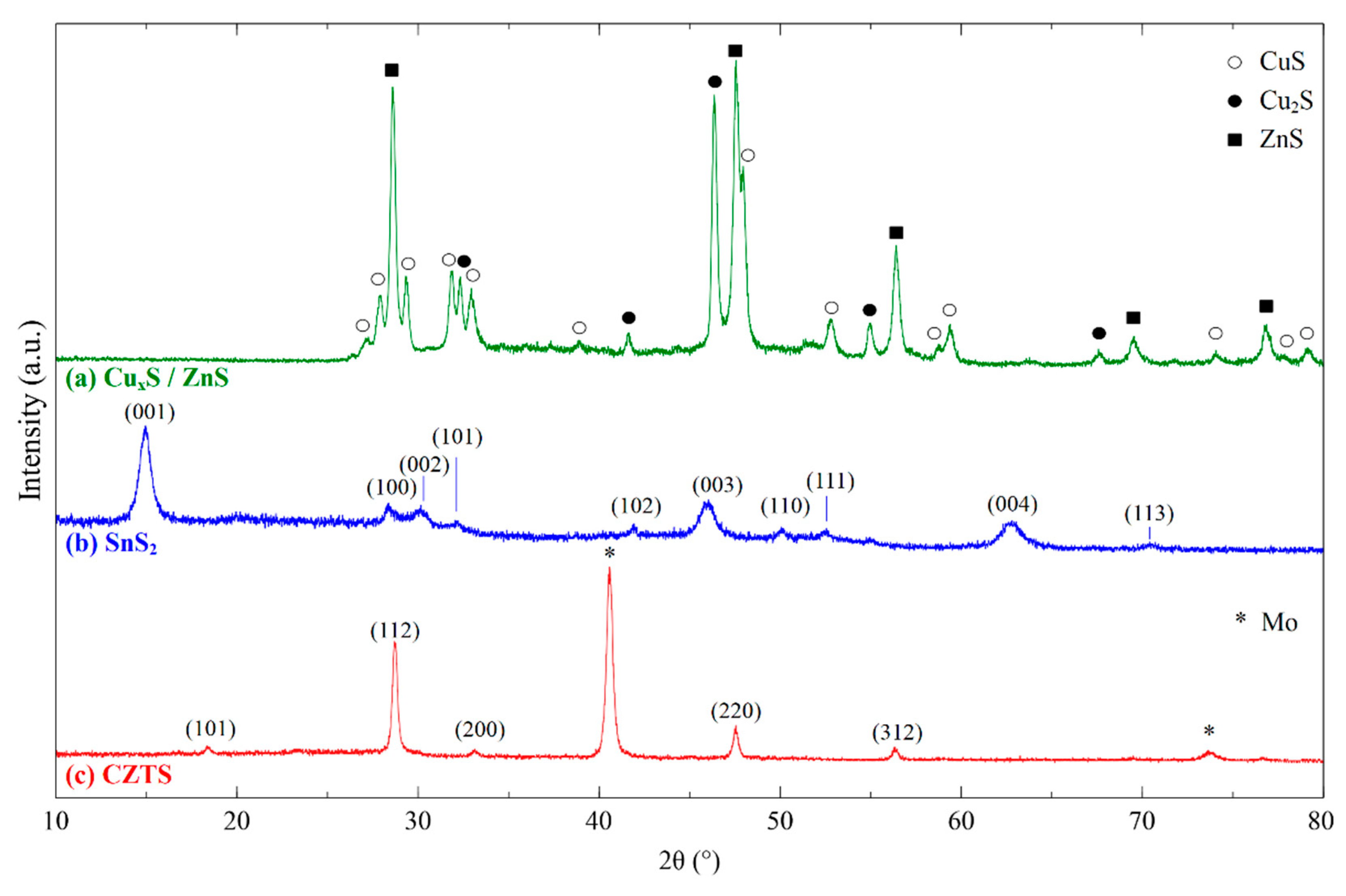
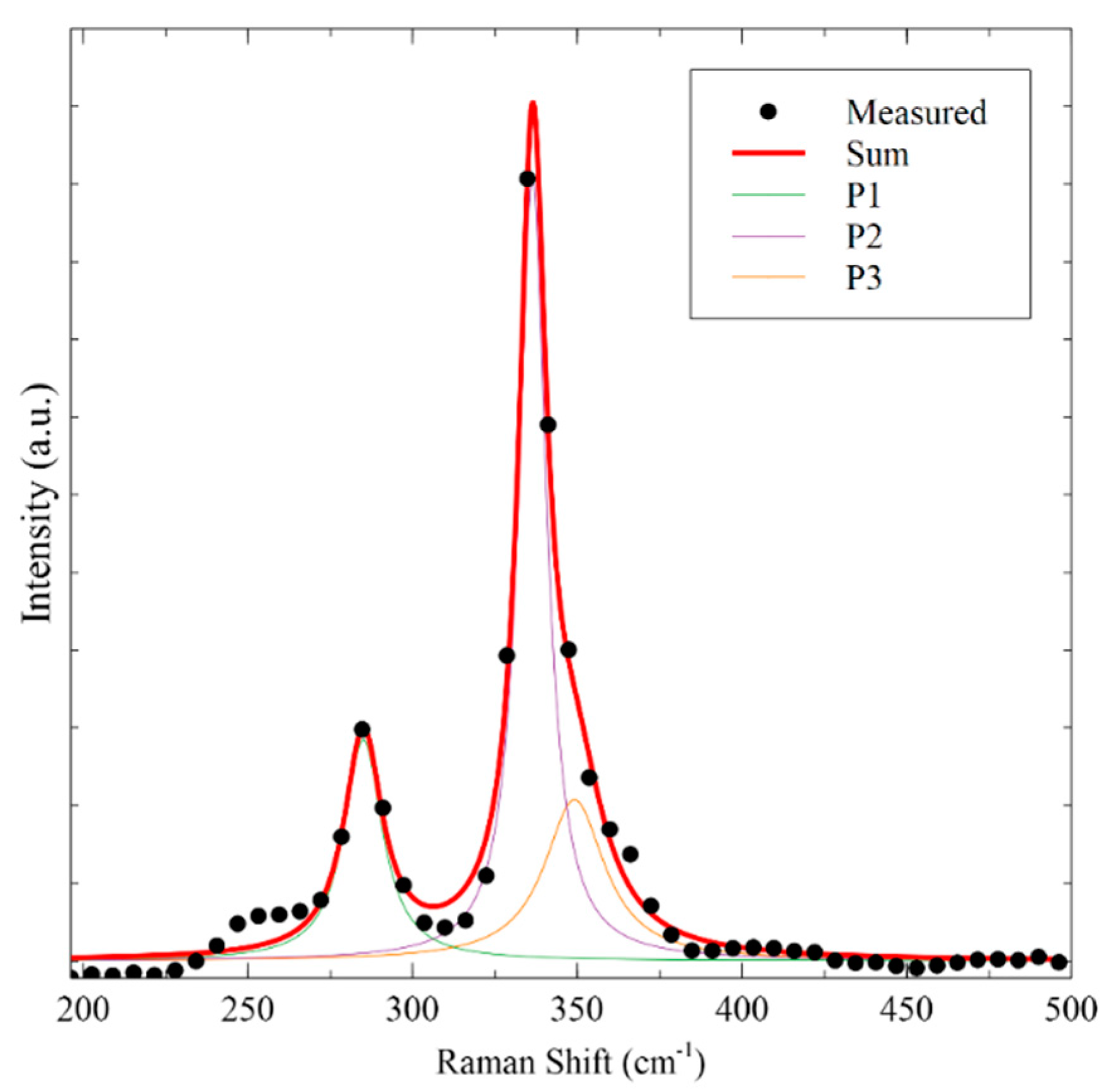
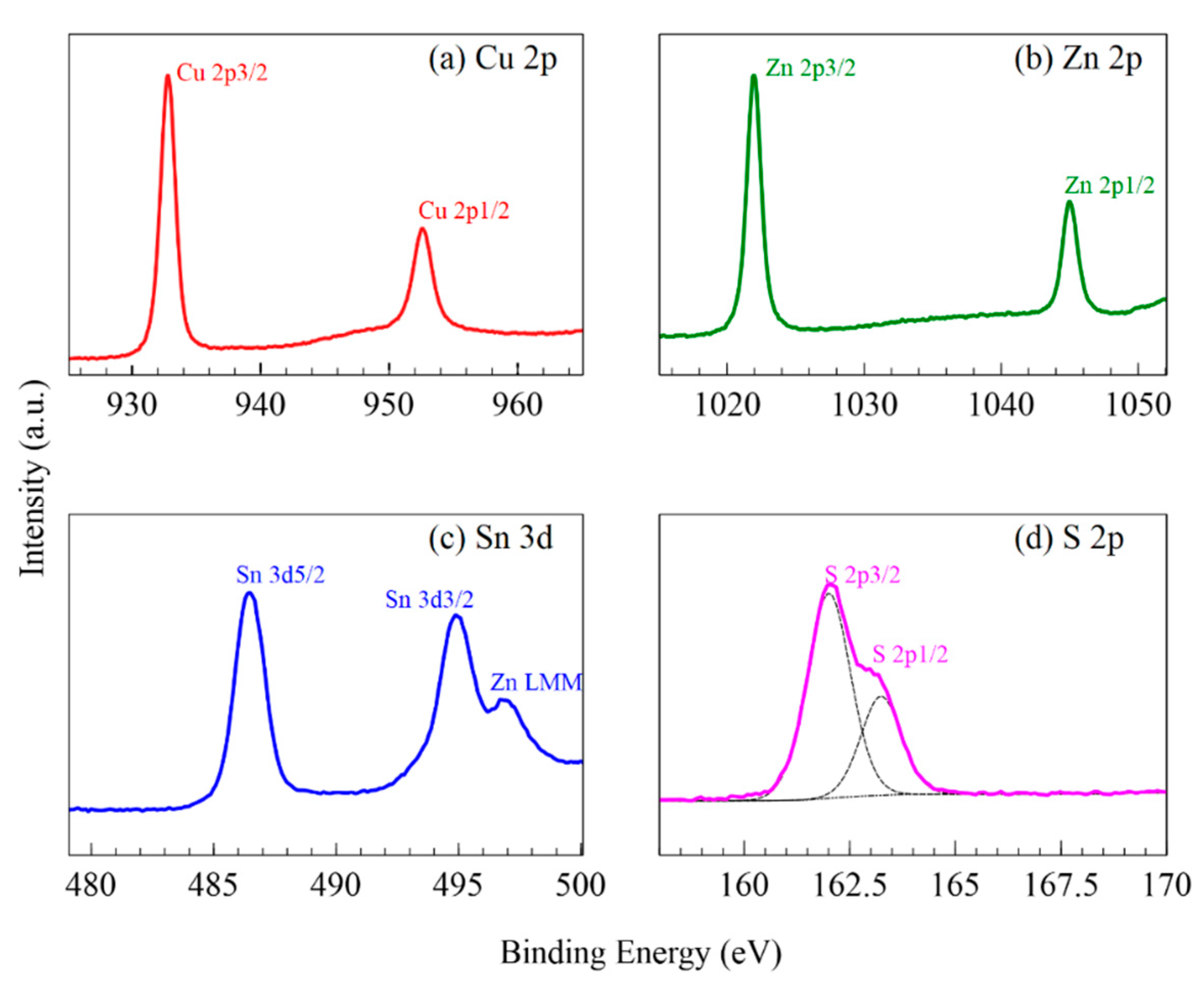
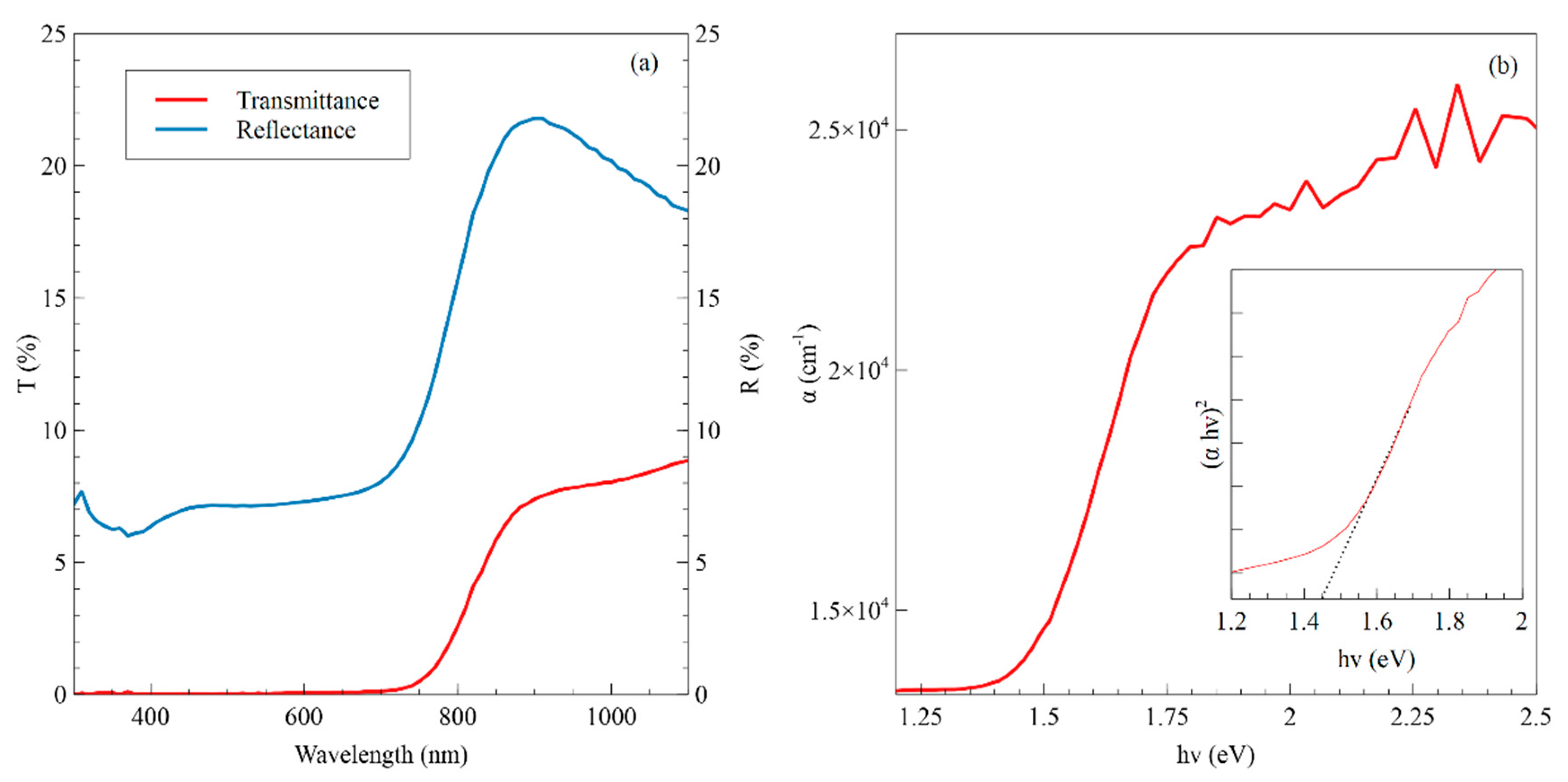
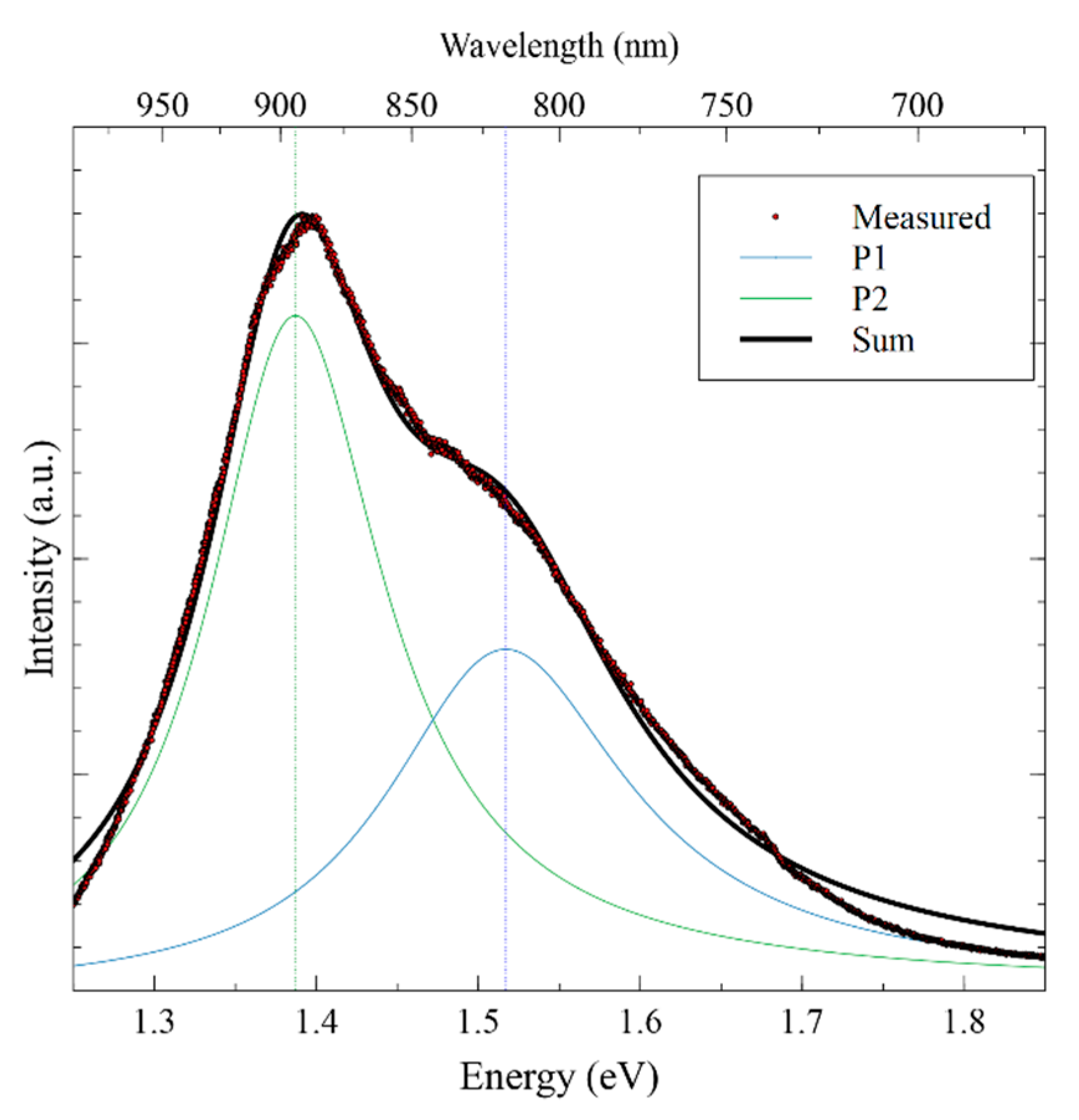
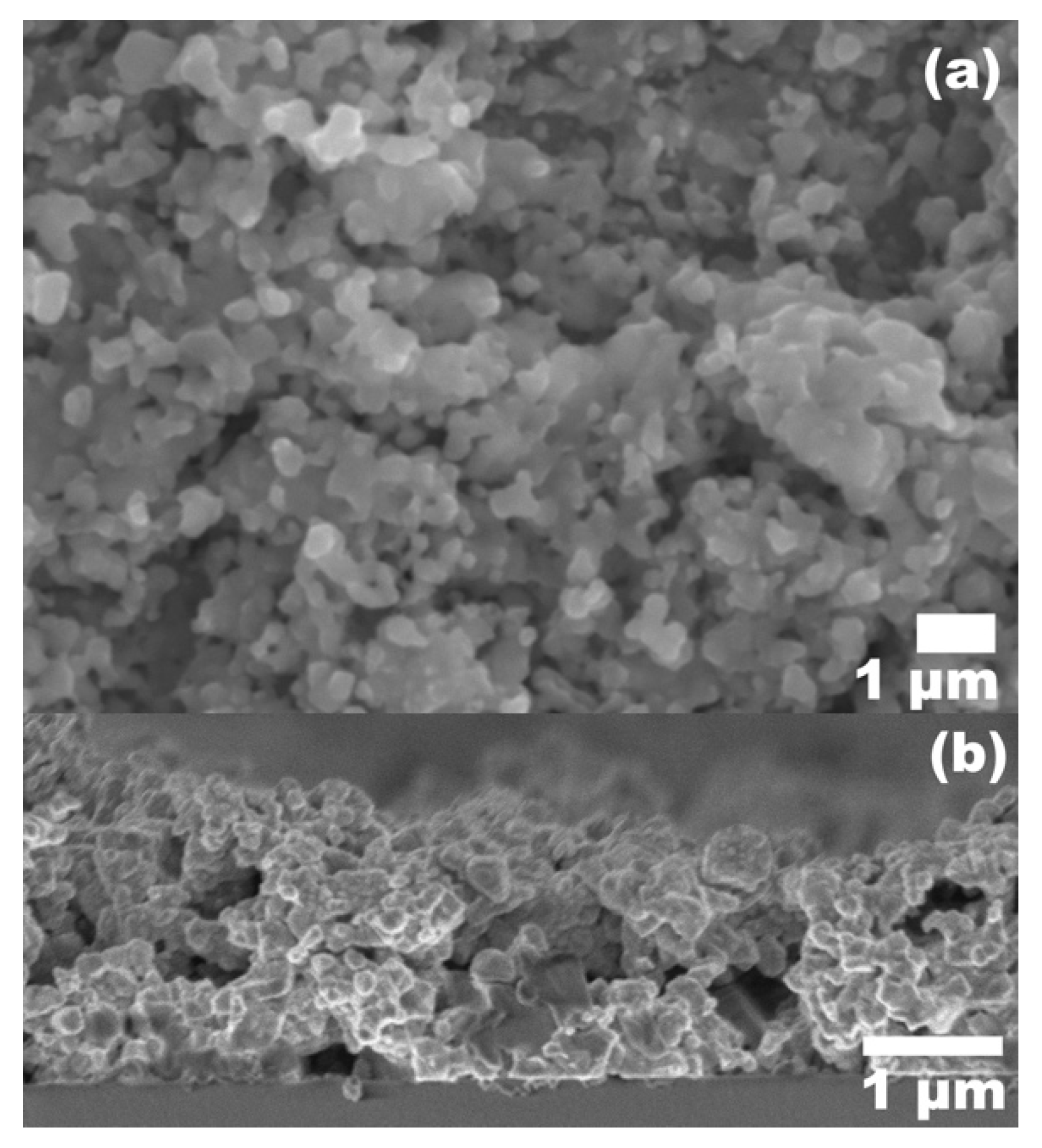

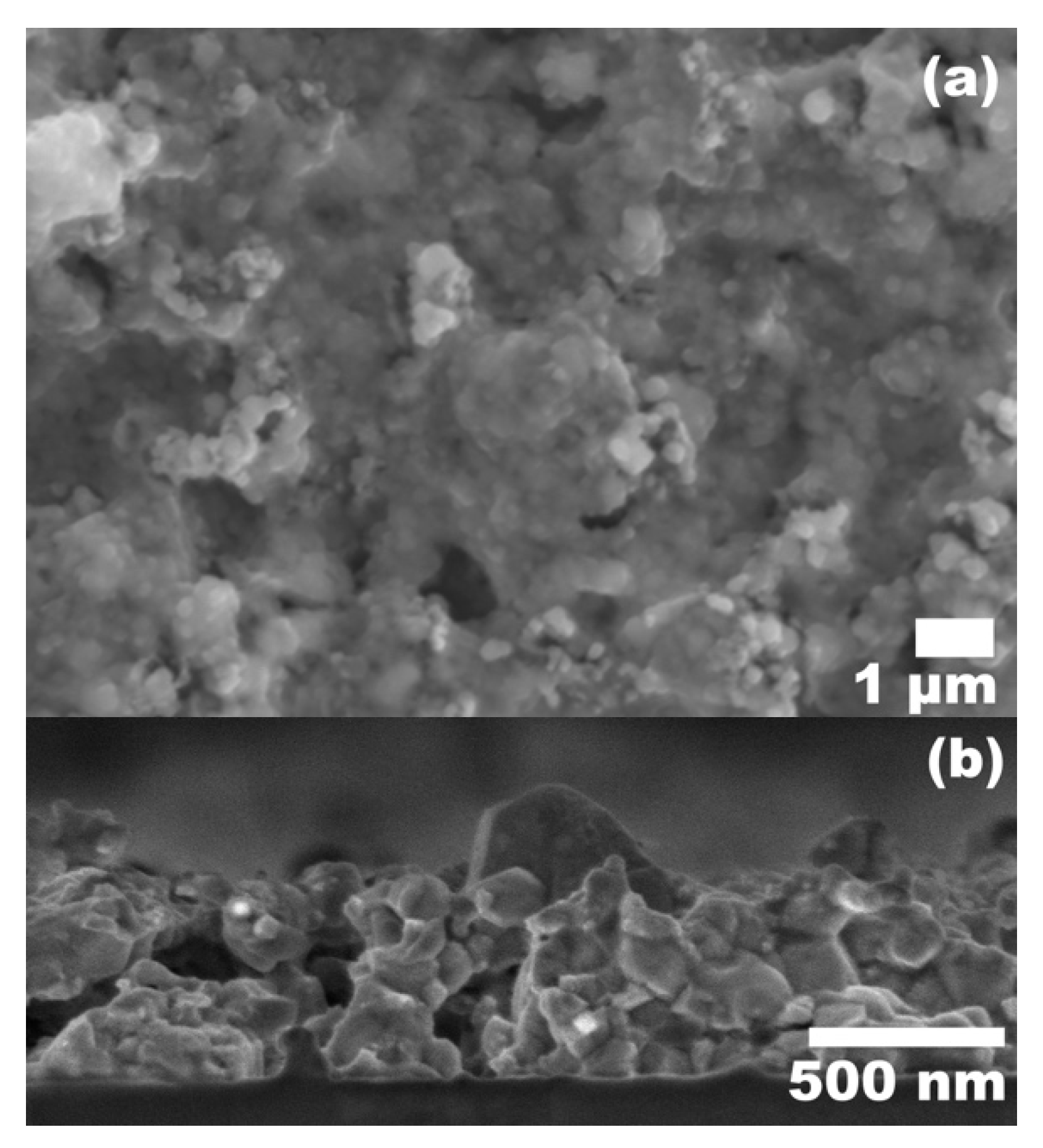
| (NH4)2S:H2O Dilution | Cu (at%) | Zn (at%) | Sn (at%) | S (at%) |
|---|---|---|---|---|
| 1:9 | 27.2 | 19.4 | 6.4 | 47.0 |
| 1:50 | 27.8 | 11.8 | 12.4 | 48.0 |
| Stoichiometric CZTS | 25.0 | 12.5 | 12.5 | 50.0 |
© 2019 by the authors. Licensee MDPI, Basel, Switzerland. This article is an open access article distributed under the terms and conditions of the Creative Commons Attribution (CC BY) license (http://creativecommons.org/licenses/by/4.0/).
Share and Cite
Wang, H.; Yasin, A.; Quitoriano, N.J.; Demopoulos, G.P. Aqueous-Based Binary Sulfide Nanoparticle Inks for Cu2ZnSnS4 Thin Films Stabilized with Tin(IV) Chalcogenide Complexes. Nanomaterials 2019, 9, 1382. https://doi.org/10.3390/nano9101382
Wang H, Yasin A, Quitoriano NJ, Demopoulos GP. Aqueous-Based Binary Sulfide Nanoparticle Inks for Cu2ZnSnS4 Thin Films Stabilized with Tin(IV) Chalcogenide Complexes. Nanomaterials. 2019; 9(10):1382. https://doi.org/10.3390/nano9101382
Chicago/Turabian StyleWang, Han, Amrita Yasin, Nathaniel J. Quitoriano, and George P. Demopoulos. 2019. "Aqueous-Based Binary Sulfide Nanoparticle Inks for Cu2ZnSnS4 Thin Films Stabilized with Tin(IV) Chalcogenide Complexes" Nanomaterials 9, no. 10: 1382. https://doi.org/10.3390/nano9101382
APA StyleWang, H., Yasin, A., Quitoriano, N. J., & Demopoulos, G. P. (2019). Aqueous-Based Binary Sulfide Nanoparticle Inks for Cu2ZnSnS4 Thin Films Stabilized with Tin(IV) Chalcogenide Complexes. Nanomaterials, 9(10), 1382. https://doi.org/10.3390/nano9101382





